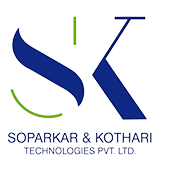MDO PE Film Moving Towards Sustainability
- Machine Direction Orientation (MDO) enhances plastic film properties like strength and clarity by stretching the material in machine direction. MDO machine uses rollers and heat to stretch films uniformly, improving mechanical traits. This process ensures tailored film properties for various applications in packaging

Advantages MDO Film
- Improved Strength: MDO films exhibit increased tensile strength and tear resistance, making them more durable and less prone to damage during handling and use.
- Enhanced Clarity: The orientation process can improve the transparency and optical clarity of the film, making it suitable for applications where visual appearance is essential.
- Dimensional Stability: These films have superior dimensional stability, maintaining their shape and size even under varying temperature and humidity conditions.
- Better Barrier Properties:The orientation process can enhance the film's barrier properties against moisture, gases, and other environmental factors, increasing shelf-life for packaged goods.
- Printability and Lamination:MDO films provide excellent printability, allowing for vibrant and high-resolution printing, and they also offer good compatibility for lamination processes.
- Customizable Properties:The MDO process can be adjusted to achieve specific mechanical, optical, and barrier properties required for various applications.
- Sustainability:The MDO PE films are recyclable in nature and supports sutainability
Overview of how the MDO process works:

Extrusion
The process begins with the extrusion of a polymer melt through a die to form a flat sheet of film.

Heating & Stretching
The film is then passed through sets of heated rollers, rotating at different speeds . These rollers stretches the film in the machine direction, inducing molecular orientation within the polymer chains.

Cooling and Setting
After stretching, the film is rapidly cooled to lock in the orientation and solidify its structure. This cooling process helps to retain the film's improved mechanical properties.
Why MDO Films From S&K

Conventional PE films lack PET’s transparency, often requiring a PET outer layer in laminates. Our MDO technology equalizes PE transparency with PET. Typically, packages utilize PE as the inner layer and PET as the outer for strength and clarity. Multi-film laminates are hard to recycle without delamination, a costly, complex process.
Our MDO films, match PET’s transparency and strength, eliminate the need for outer PET. This shift to monomaterial laminates ensures easier recyclability, fulfilling the global call for sustainable packaging
Our MDO films, match PET’s transparency and strength, eliminate the need for outer PET. This shift to monomaterial laminates ensures easier recyclability, fulfilling the global call for sustainable packaging
Advantage S&K
We are the only setup in India which produce all films under one roof
Hygiene Films - PE backsheet, Pouch film
Hygiene Packaging - Outerpack
Flexible Packaging - shrink film, milk film.
Our capability to make as low as 11 gsm breathable films. Currently these are imported by Top brands in India
We produce breathable films using blown technology, resulting excellent mechanical properties
Our blown technology is powered by Windmöller & Hölscher , the world's best machine for manufacturing films
Our Approach to sustainability - we have a recycling plant
Our Capability to create breathable film with water vapour transmission rate (WVTR) as low as 500gms/ 24hours to as high as 3000gsm/24 hours.

